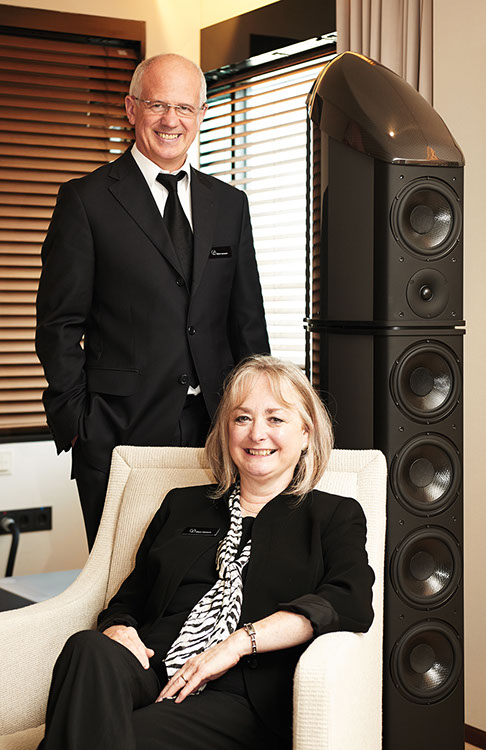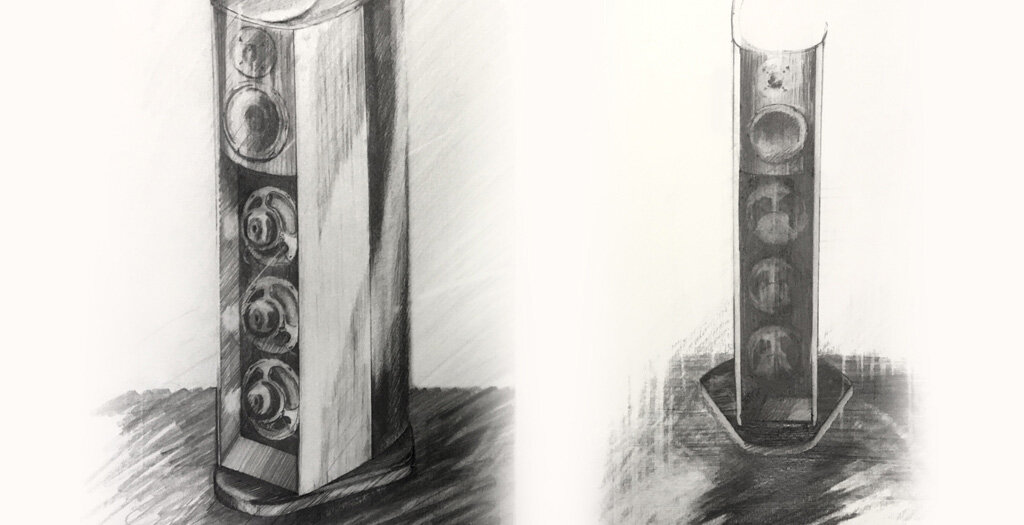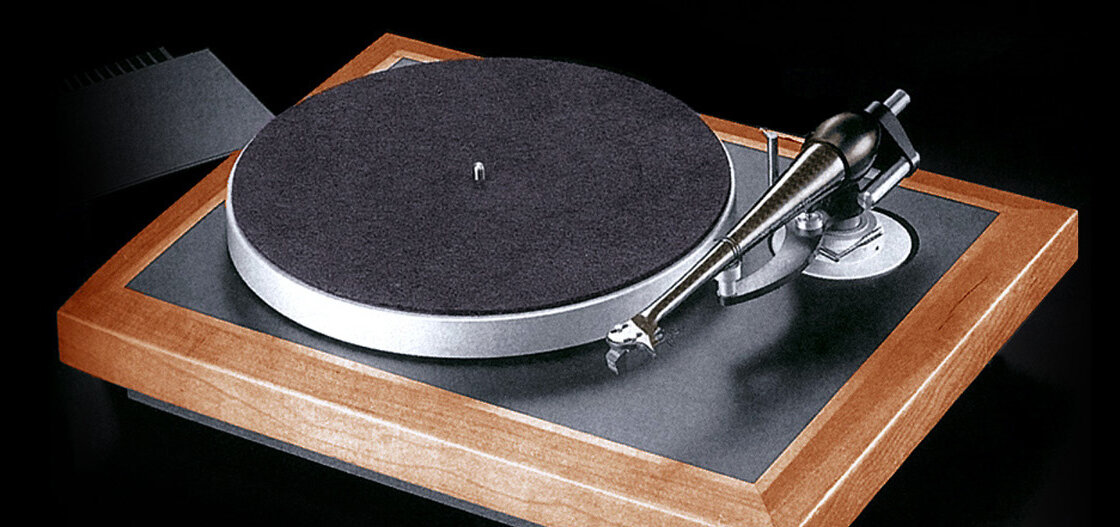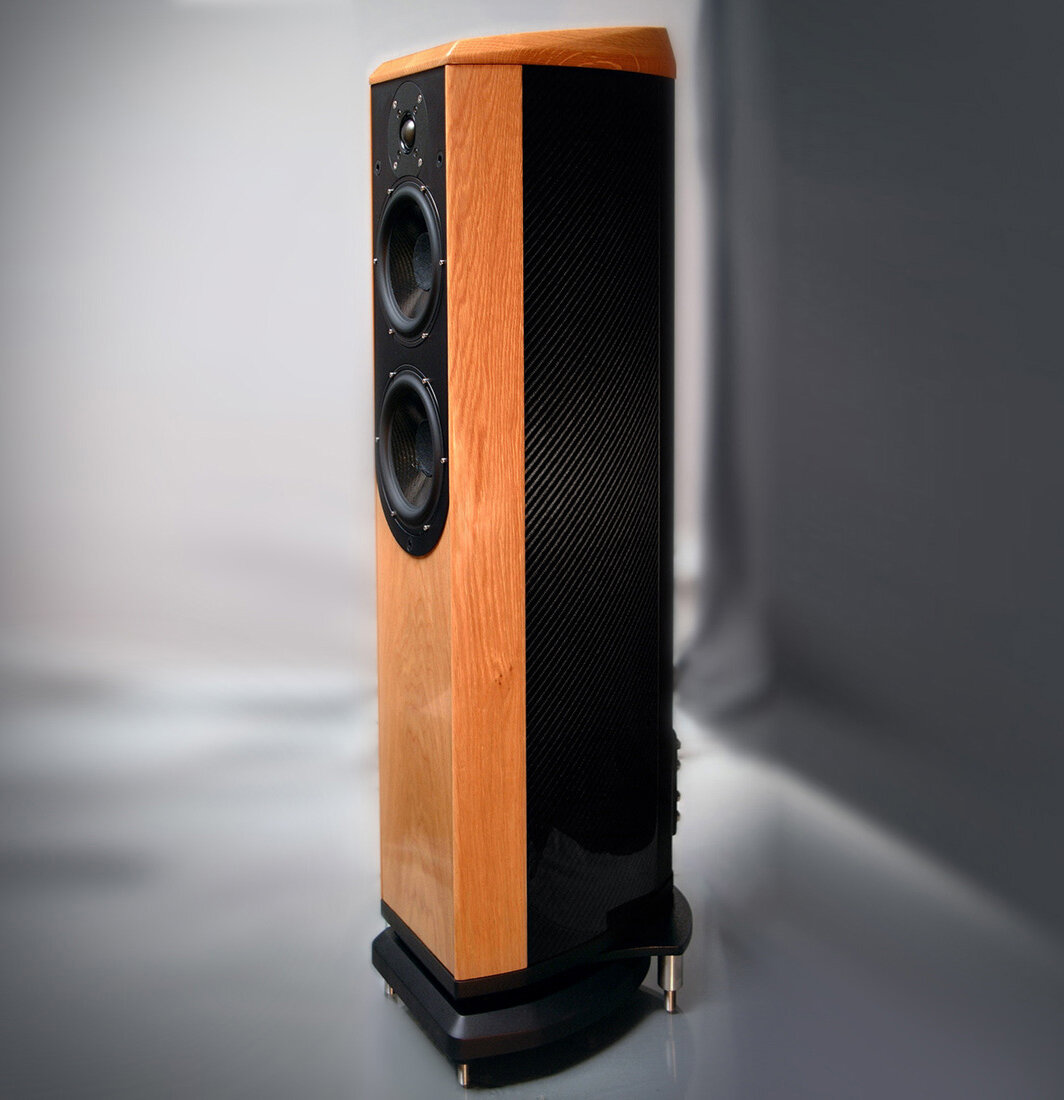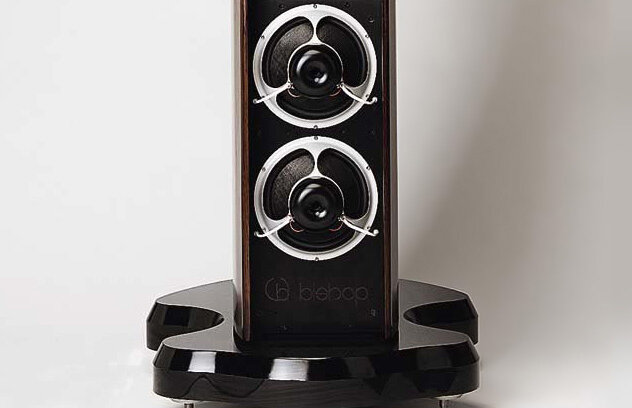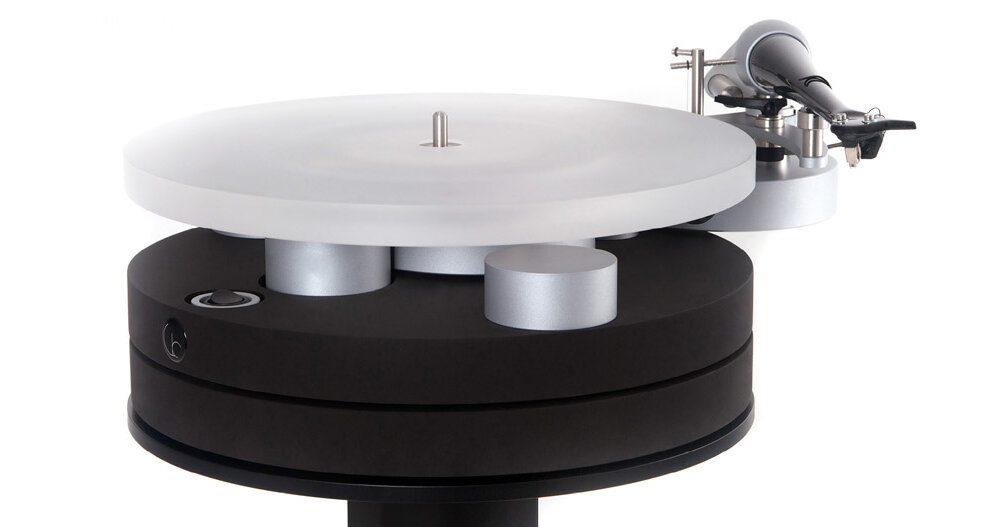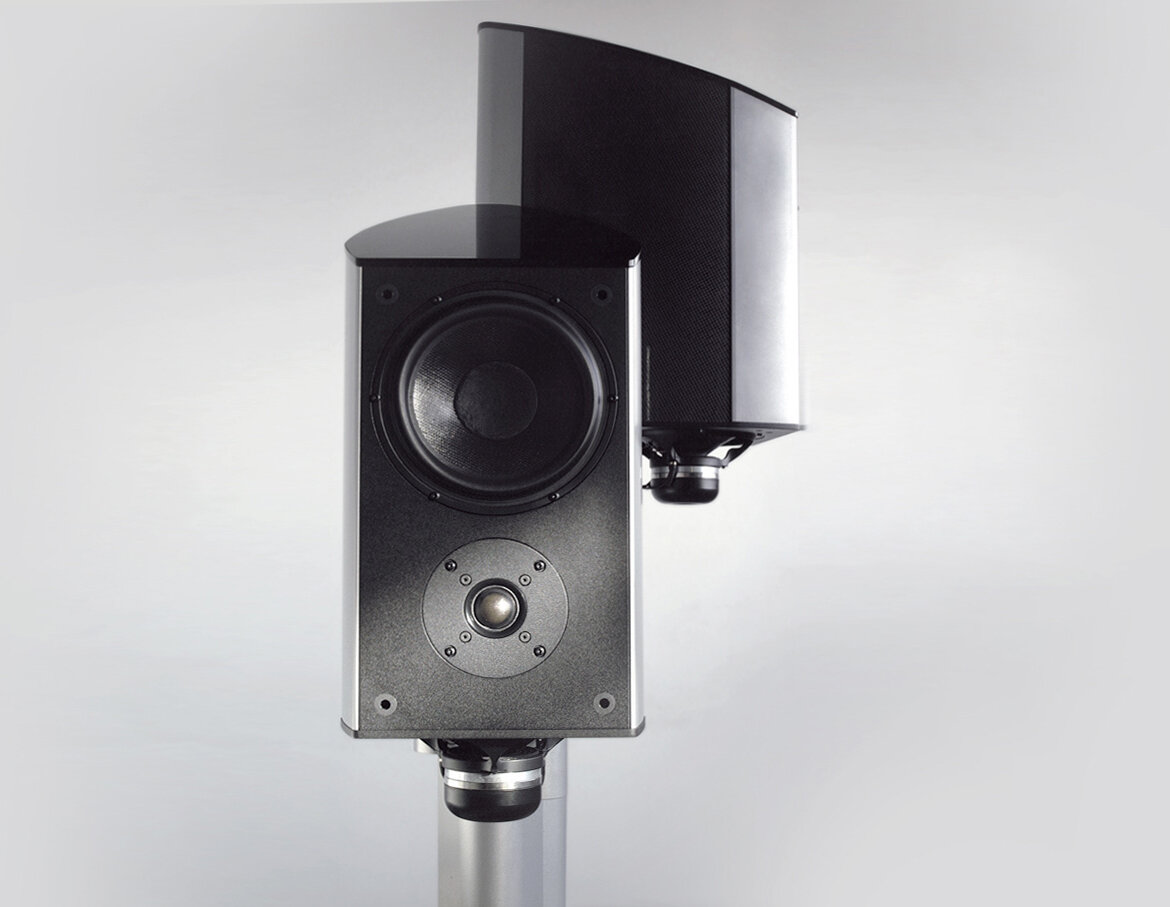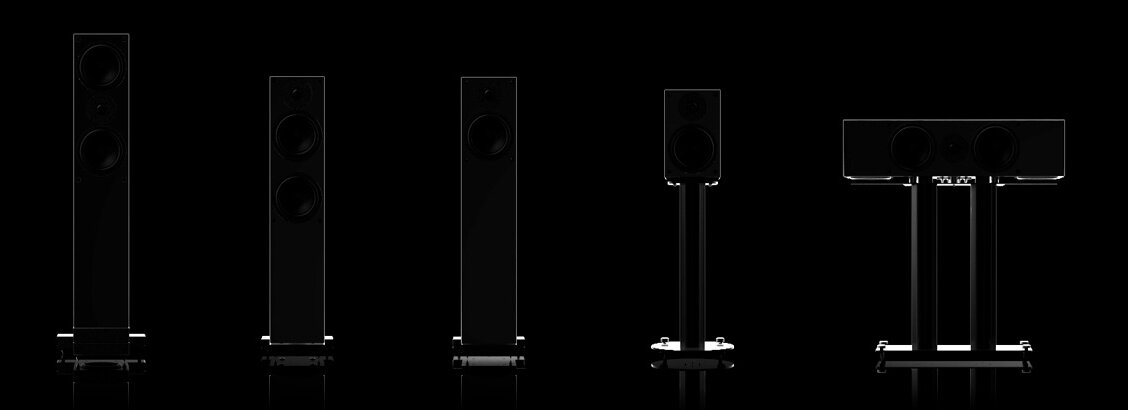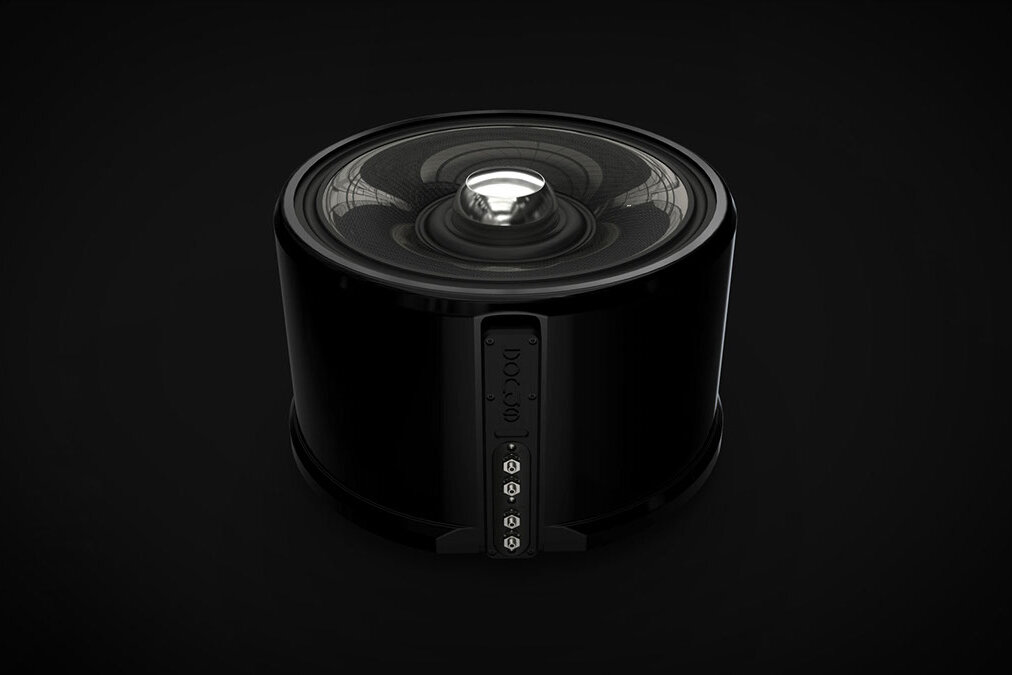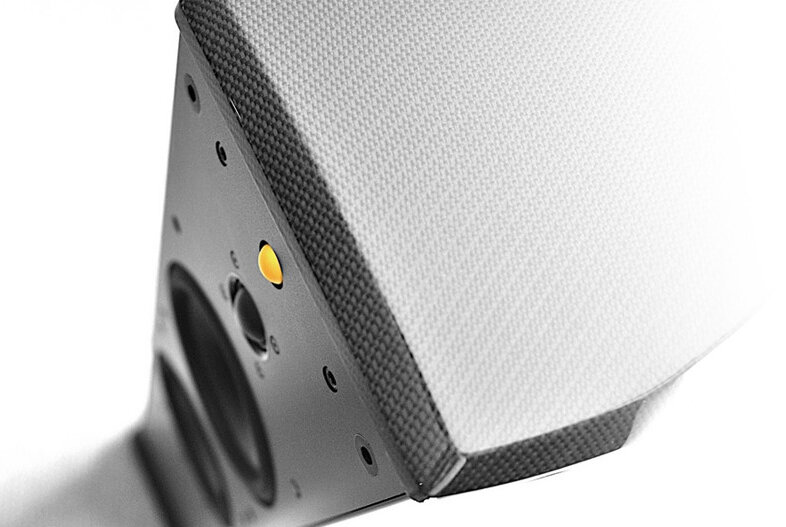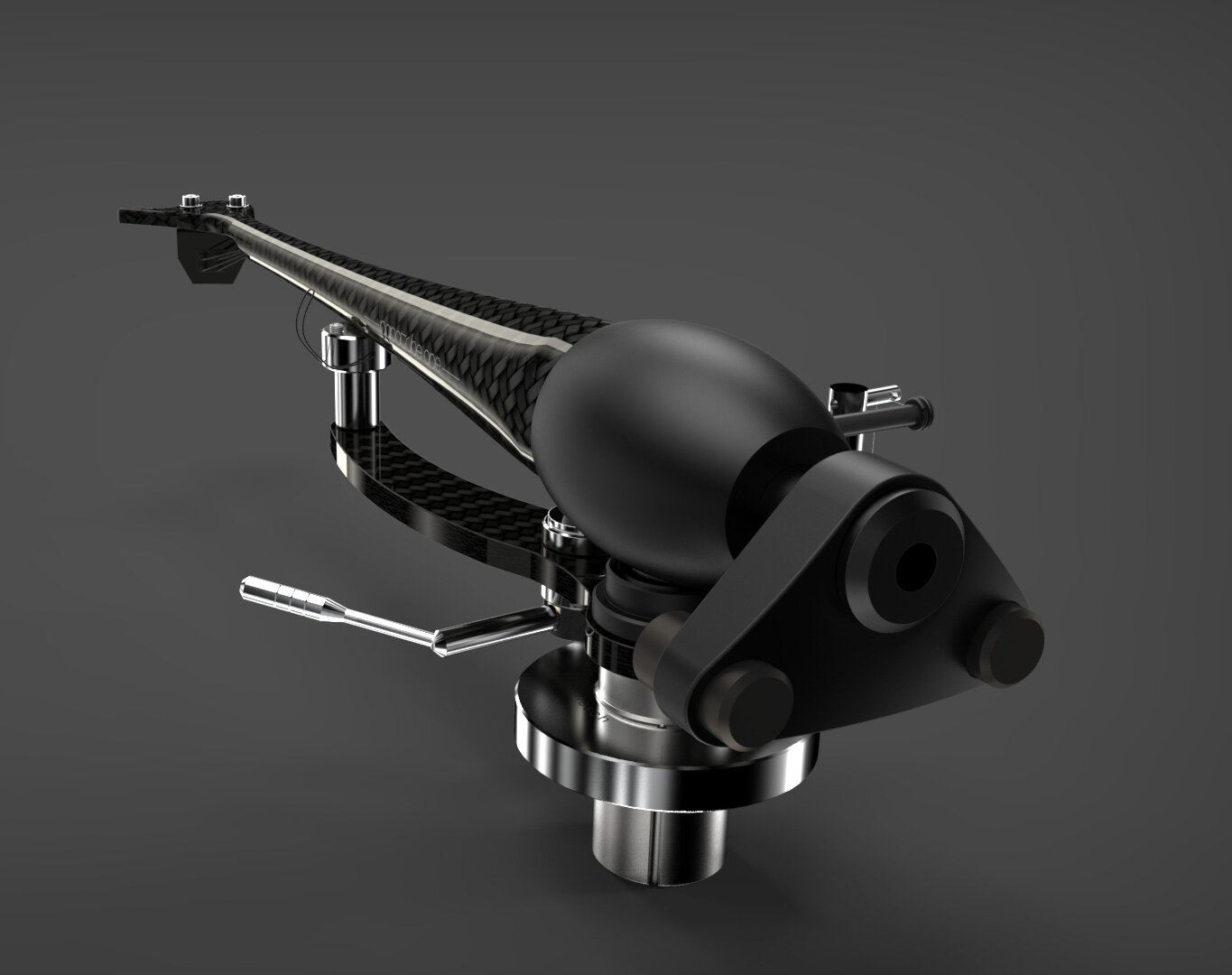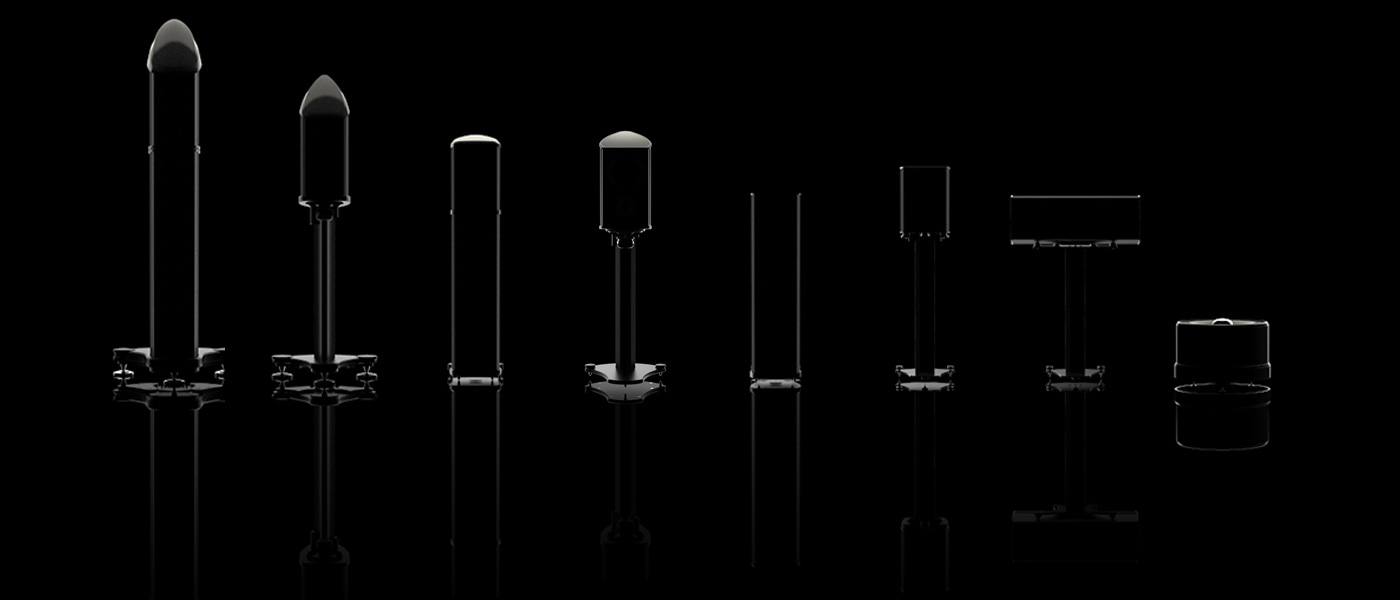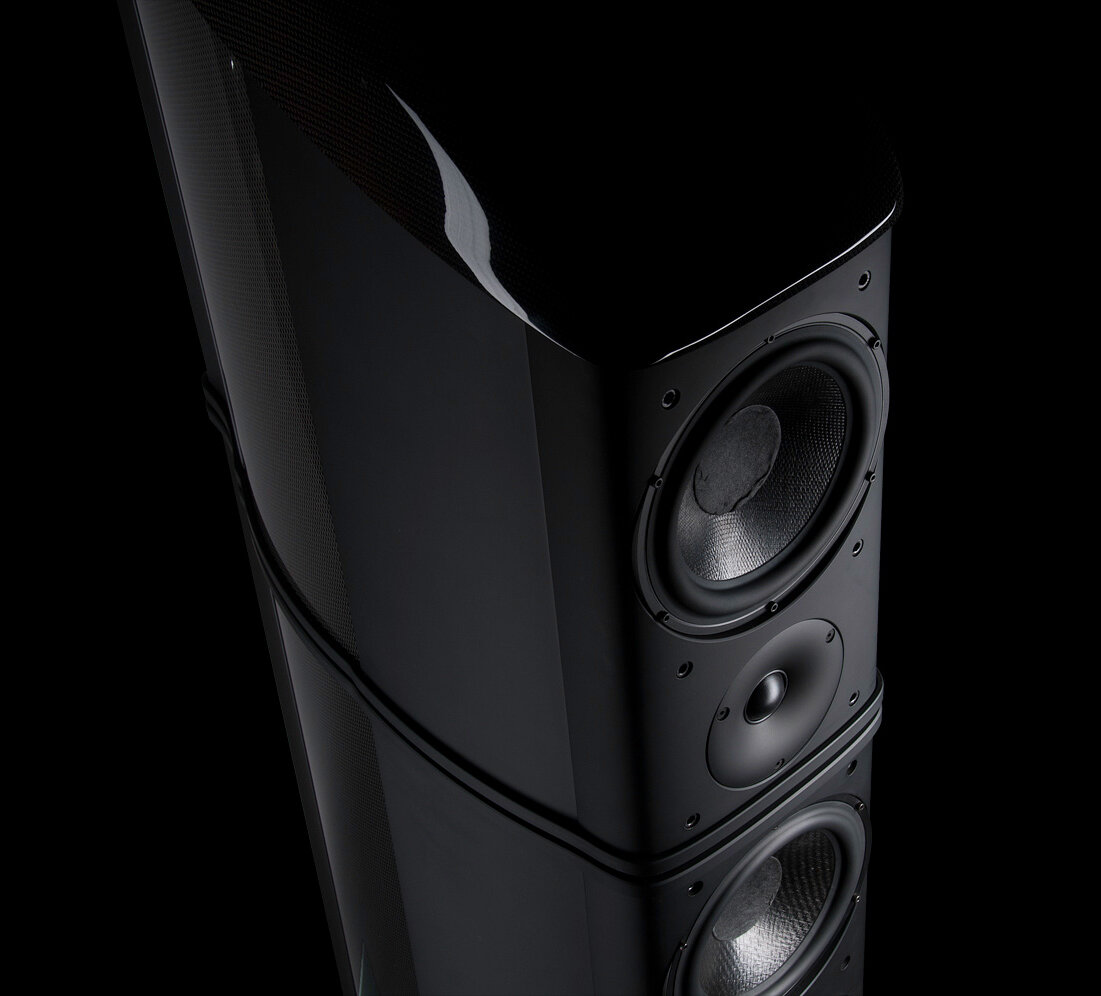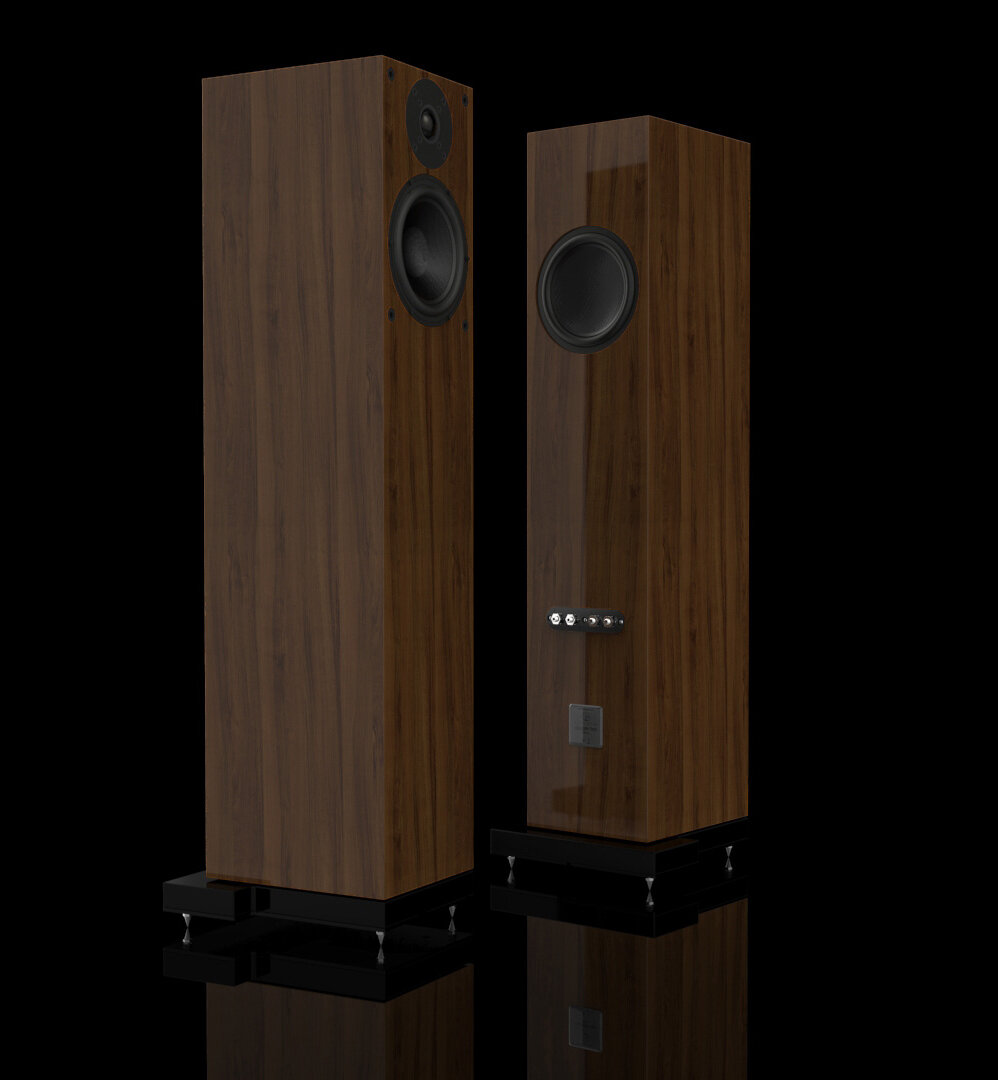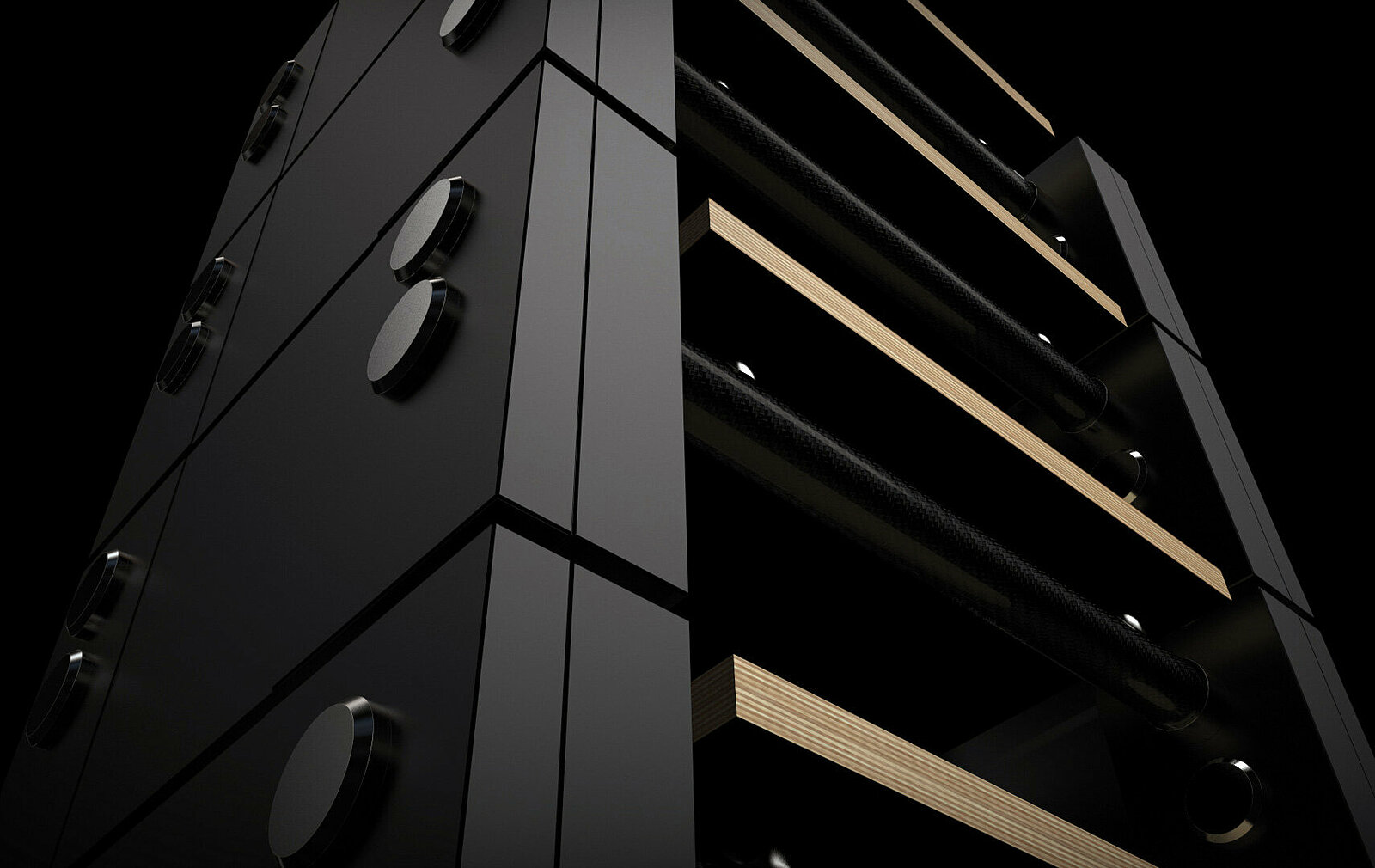Mission statement
Music is an art form. From sound to silence; a simple, single instrument, to a full orchestra, music is capable of transforming, uplifting and emotionally stirring us like perhaps no other art form. Music is a global language; it transcends age, ethnicity, culture and class. Music has been central to our culture since the dawn of man, spanning our evolution. It is capable of joining us to our ancestors, describing human development, documenting our progress and reflecting perhaps most faithfully the human condition according to time. In every sense it is a collaborative document of humanity that can be transformed, sampled, improvised and referenced according to the generation of the time.
Our mission is to enable access to this art form; revealing every detail, nuance and timbre of the recorded artist through the world’s ultimate, reference audio products. Through an iterative process of design, underpinned by highly ambitious research and development programs, Wilson Benesch puts you closer to the artist than ever before.
Wilson Benesch history
Foundation
Founded in 1989 and owned and directed by Craig Milnes and Christina Milnes, Wilson Benesch is a globally recognised brand, designing and manufacturing, high-tech luxury home consumer audio products. Located in Sheffield, South Yorkshire, the company today is a highly optimised and vertically aligned design and manufacturer, comprised of a team of highly trained craftsmen, designers and engineers.
In 1989 the company bank account opened with just £25,000. Within 12-months the company would commit much of this funding to its first research and development project, which was match funded with £25,000 from the British government by way of the Department of Trade and Industry (DTi).
The outcome of this R&D project would result in a multi-award winning product, that would establish the company among the landscape of high-end audio and in the process secure the company a number of the world’s most reputable import partners. The product was the Wilson Benesch Turntable and the ‘Advanced Composite Technology’ or A.C.T. One Tonearm.
The Wilson Benesch Turntable & A.C.T. One tonearm
The Wilson Benesch Turntable and the A.C.T. One tonearm were products like no other. The designs had a number of innovative features that governed exceptional performance and placed the turntable and its tonearm in a class of reference products for their time. However the advanced material technology at the heart of the design truly differentiated the product from the competition.
The Wilson Benesch Turntable featured the world’s first carbon fibre composite sub-chassis and the world’s first hyperbolic carbon fibre tonearm, the A.C.T. One. By placing the carbon fibres in a helix, Wilson Benesch’s A.C.T. One tonearm delivered maximum torsional stiffness, as well as maximum damping of structural borne vibration within the system.
The use of carbon fibre was a revelation, not only to the audio industry, but arguably within the sphere of home consumer product design where the use of carbon fibre composites was almost unheard of. In the same decade that Wilson Benesch started developing the turntable and the tonearm, McLaren had revolutionised the landscape of Formula 1 motorsport forever by introducing the MP4/1. However, this was aerospace technology and the preserve of multi-million pound design and engineering firms. Thus, at the time when Wilson Benesch introduced the Wilson Benesch turntable there were just four companies in the United Kingdom capable of producing carbon fibre composite components: Lotus Racing; two companies privately commissioned for projects by the Ministry of Defence (MoD) ; and Wilson Benesch.
A.C.T. One – the first Wilson Benesch loudspeaker
Carbon fibre was an advanced engineering material with remarkable properties which created a number of advantages to the design process within Wilson Benesch. The material would become irrevocably linked to the company's product development programme from this point forward. Carbon fibre currently defines the Wilson Benesch brand globally.
The success of the Wilson Benesch Turntable had established the company and allowed Wilson Benesch to begin reinvestment in new product development and research into advanced material technology and manufacturing. In 1994, Wilson Benesch completed its second R&D project, again partly funded by DTi investment into innovative R&D. At the 1994 Frankfurt High End show, Wilson Benesch launched its first loudspeaker, the A.C.T. One loudspeaker.
The A.C.T. One would be a phenomenal success for the company. It was developed through strong collaboration with numerous leading engineers from a variety of fields, including advanced composite engineering and acoustic design.
Like the turntable preceding it, the design was radically different from anything seen to date. The A.C.T. One design departed from the ubiquitous square box design dominant in the market at the time. It introduced the world’s first curved carbon fibre composite panel to loudspeaker design, along with a sloping top and a solid metal baffle that had also never been seen in any loudspeaker previously. Acoustically, the design placed a significant emphasis on phase coherence and therefore the reduction of complex crossover elements. To date, this remains a defining element of the company’s design ethos and has been maintained in all subsequent products, ultimately leading to the crossover free loudspeaker designs implemented in the brand's reference series today.
The critical endorsement of the A.C.T. Loudspeaker is evident from the awards and reference status that it established throughout the world. It became Reference in Germany and collected 6 additional awards in key markets in 1996 including two in Japan.
Export sales in subsequent years would continue to grow as Wilson Benesch started to establish the global reputation that it enjoys today.
Made in Britain
Wilson Benesch recognised the importance of manufacturing. It provided the design team and engineers within the company ultimate control over all elements of the product design and thus a competitive edge. The blueprint for a vertically aligned, design and manufacturing company was acknowledged in the first business plan that helped secure the first DTi grant for Wilson Benesch in 1989.
In 1990 Wilson Benesch invested in its first lathe. Today the company employs a team of highly trained designers and engineers that operate more than £350,000 of state-of-the-art CNC tooling and carbon fibre Resin Transfer Mould technology (VRTM) machinery. In addition the company operates multiple Dassault Systemes desks, allowing for cutting edge 3D modelling and design.
This degree of investment in manufacturing is rare within the audio industry, where the trend tends to be third party manufacturing to produce parts for final assembly. However, at the cutting edge, technology and manufacturing advance quickly. In order to make real innovation possible, design must exist in one hand with manufacturing in the other.
The Bishop project: The birth of the Tactic multirole drive unit
As Wilson Benesch approached the end of the 1990s, the company had transformed. When Wilson Benesch relocated to our current home, Falcon House in 1993, the whole operation occupied a single wing of the four wing, two floor building. By the turn of the century, Wilson Benesch occupied both floors with a full suite of machinery. This suite of machinery was central to the success of Wilson Benesch’s second grant application in 1998.
The new grant application was entitled ‘the Bishop project’ and outlined an R&D programme to develop a new multirole dynamic drive unit technology that would compliment the enclosure technology developed in the A.C.T. One loudspeaker and allow for the development of a new flagship loudspeaker. The application was submitted to the DTi under the SMART Funding initiative and was successful. Wilson Benesch were awarded £250,000 from Her Majesty’s Government. At the time of writing in 2016, no other British audio manufacturer has successfully applied for and won grant funding from the British Government.
In 1999, Wilson Benesch held the global première of its new flagship loudspeaker, the Bishop, at what was then the world’s most prestigious high end audio exhibit in Stuttgart, Germany. The Bishop was a radical design, featuring nine of the new Tactic drive units developed under the Bishop project.
The new Tactic drive technology was incomparable to anything available at the time. It featured exotic magnet technology in the form of NdFeB rare earth magnets, not seen in the high end audio industry before. It had a stiff, lightweight isotactic polypropylene cone in front of a highly engineered low profile basket. The drive technology was cutting edge in every respect. Furthermore, eight of the nine drive units in the Bishop were deployed in an unusual clamshell or 'Isobaric' formation. This provided the Bishop with incredible dynamics and punch in the bass register.
That year, the Bishop was made Reference system by Germany’s Stereoplay magazine. A two-part review across two months (a technological focus in the first and listening tests in the second) set a precedent for the magazine. Each feature benefited from four pages of detailed explanations. It was a major achievement for Wilson Benesch as it approached its first full decade in business.
The reference for all: The analogue collection
The first business plan drafted by the founders of Wilson Benesch, conceived before the company's establishment in 1989, outlined the blueprint for a new British high end turntable. The business plan stated that vinyl and analogue replay would remain central to high fidelity sound reproduction despite the advent of the compact disc gathering momentum in media at the time which promised “Perfect Sound Forever”. This prediction proved to be accurate. The Wilson Benesch turntable was a huge success for the company, not only returning good profit for the new company, but it also winning awards across Europe and Asia, putting the Wilson Benesch name on the map.
In 1999 Wilson Benesch launched the Circle turntable. It formed part of a growing collection of products called the Analogue Collection, which also included two carbon fibre composite tonearms, the A.C.T. 0.5 and A.C.T. Two, along with two cartridges, the Ply and the Carbon.
The Circle turntable was a major departure from the original Wilson Benesch turntable and indeed from turntable design of the time. The sprung suspension parts of the Wilson Benesch Turntable were replaced by a totally new concept based around cantilevered carbon fibre suspension. The design extracted damping performance from the unidirectional carbon fibre cantilevers terminated in alloy outposts to form a suspended sub-chassis. In turn the two distinct circular plinths, allowed the motor to be housed in the lower plinth, isolated from the upper plinth by lossy polymer nodes. It was a beautifully simple, but extremely effective design that would go on to win many awards for the company.
Odyssey range
Wilson Benesch saw out the 20th century with huge momentum. In one short decade the company had established itself as a turntable and loudspeaker designer, winning major awards along the way, established itself across the globe with key importers and had an enviable manufacturing facility.
In 2001, two years after the Bishop project and the realisation of the Tactic drive unit, the company had launched two loudspeakers installed with the new drive technology; the Bishop loudspeaker and the second iteration of its breakout loudspeaker, the A.C.T. Two. But things were about to change with the announcement of a new line of loudspeakers called the ‘Odyssey Range’.
The first design to launch was the ‘Discovery’; a radical standmount design that featured a downwards firing Isobaric Tactic drive system located on the underside of the loudspeaker with a frontfacing midrange Tactic drive unit above. In 2002, the ‘A.C.T.’ was launched; representing the third iteration of the A.C.T. lineage. Accompanying this were two new designs: the Arc standmount and the Curve floorstanding loudspeakers.
The Odyssey Range was an immediate success, collecting significant awards across the globe. Notably, the Discovery was awarded ‘Component of the Year’ by Stereo Sound Japan in 2001, going on to achieve a 5-star review by What HiFi? and subsequently replacing the A.C.T. One as the magazine's Reference System in 2004 and retaining the title in 2005. In addition, the A.C.T. won the Stereo Sound Japan ‘Grand Prix Award’ in 2002. Meanwhile the Arc and the Curve collected ‘Product of the Year’ in HiFi Review Hong Kong.
In 2006, Wilson Benesch launched, Chimera - a new flagship directly replacing the Bishop. Featuring an A.C.T. monocoque that had been used across the range, the Tactic drive unit and Isobaric drive system, a sculptured carbon fibre top and alloy cheeks, it was perhaps the speaker that epitomised the achievements of the DTi funded Bishop project.
Square Series
2006 saw the introduction of the Square Series. The collection of loudspeakers, in contrast to the company’s carbon fibre based Odyssey Range, employed traditional wood based cabinet design. At the time of launch, the Series consisted of; a compact bookshelf, the Square One; a floorstanding design, the Square Two; and a dedicated centre channel, the Square Centre.
Wilson Benesch drew upon all the R&D from the development of its reference line to develop a modern approach that extracted maximum performance from the wooden cabinet design. Fitted with the same Tactic drive units and ScanSpeak tweeters as the reference line, hand built in the UK and finished by a team of Bentley Motors trained craftsmen, the Square Series represented an incredibly competitive line of loudspeakers; peerless finishing, performance and heritage.
Upon launch, both the Square One and the Square Two won the What HiFi? Group Test, being awarded 5-stars. What HiFi? went on to award the Square Two, ‘Best Stereo Speaker £2000+’ in 2007.
Redefining high end audio: Torus Infrasonic Generator
In 2003 Wilson Benesch commenced its third R&D program partly funded by Her Majesty’s Government when it secured another SMART Award for its feasibility study into an innovative, patentable, infrasonic drive unit. In 2006, following almost three years of R&D, the Torus Infrasonic Generator and its dedicated Torus Amplifier were born.
The Torus has become a landmark design and one of the most important in the company’s history. Wilson Benesch was keen to draw the distinction between the conventional subwoofer and the innovation of the Torus, leading to the term 'infrasonic generator. Convention woofer design is based on a wooden box, a woofer and an active amplifier. While the Torus Infrasonic Generator is similar to this to the extent that it converts electrical energy from the amplifier into kinetic energy, the fundamental difference is that this is achieved using a push-pull motor design. This legislates the position of the incredibly light weight 18” carbon fibre cone at all times as opposed to relying on a high hysteresis suspension to restore the cone to rest position. The audible result is incredible accuracy in the reproduction of low frequency sound.
In 2006, the Torus swept away with accolades from across the globe. Stereoplay Magazines’, Holger Bierman described the Torus as ‘the most accurate woofer of all times’. Influential HiFi journalist Jonathon Valin of Absolute Sounds USA, added, “Strokes of genius are rare in any field, but I think Milnes’ Torus qualifies”. Later that year the Torus Infrasonic Generator was awarded ‘Product of the Year’ in Absolute Sounds, followed by HiFi+ ‘Product of the Year’, ‘Platz Highlights’ in Stereoplay Magazine Germany, ‘Best Buy’ in Hi-Fi Choice UK and a 5-star review in What HiFi? in 2007.
Redefining high end audio: Wide bandwidth
The Torus Infrasonic Generator was just one aspect of a vision for three new Wilson Benesch products. While the Torus pushed the envelope in the reproduction of low frequency sound, a collaborative project between Wilson Benesch designers and Murata was addressing sound at the other end of the frequency spectrum by realising a new supertweeter.
In 2007, Wilson Benesch launched the Trinity, a monitor loudspeaker installed with a next generation WB-One drive unit, the Scanspeak tweeter and the ‘Sphere’ supertweeter. In partnership with the Torus Infrasonic Generator, the Trinity was capable of reproducing wide bandwidth sound from 20Hz to 100kHz.
In 2008, the Trinity was followed by the A.C.T. C60 – the fourth generation design in the A.C.T. line. Launched officially at the inaugural Singapore Grand Prix to much fanfare, the A.C.T. C60 was named in honour of the “Buckyball” – a net-like structure of 60 carbon atoms discovered by a team of scientists led by Sir Harry Kroto. Acknowledgment of this discover with a Nobel Prize underlines that it was one of the most important findings of the 20th century , forming the foundation for investigation into carbon nanotechnology including carbon nanotubes and graphene.
The A.C.T. C60, together with the Trinity and the Torus would form a hugely successful product line. In 2010, leading journalists and Editor-In-Chief at Stereo Magazine Germany wrote of the A.C.T. C60, “Hesitate at your peril, for you will miss one of the most exciting loudspeakers of recent years. With the A.C.T. C60, the British manufacturer Wilson Benesch sets new standards!”.
In 2015, Wilson Benesch retired the Wide Bandwidth Collection, replacing the Sphere with the new Semisphere hybrid dome tweeter, designed and developed entirely in-house.
Nanotechnology: Nanotube One tonearm
In 2007, Wilson Benesch undertook a collaborative project with Sheffield Hallam University aimed to introduce nanotechnology into manufacturing and production processes. In 2008 the Nanotube One tonearm was first introduced. It would be the world’s first tonearm to use carbon nanotubes.
Featuring a carbon fibre - nanotube composite composition, the Nanotube One is the world’s stiffest and most highly damped tonearm. It employs geometry identcal to the line of A.C.T. tonearms that preceded it. However, by infusing the carbon fibre with carbon nanotubes, Wilson Benesch are able to stiffen the Nanotube One by 30% over and above that of the A.C.T. 25 Tonearm, while improving damping performance.
The Nanotube One is a highly evolved design. Structurally, carbon nanotubes are tubular cylinders of carbon atoms, with a diameter 10 000 times smaller than a human hair. Yet, at an individual tube level, these structures exhibit 200 times the strength and 5 times the elasticity of steel, making them among the strongest and most highly damped structures yet discovered. The pioneering research and development that Wilson Benesch undertook to develop the Nanotube One reaffirms the company's remarkable capacity for genuine innovation , advanced manufacturing and design. A marvel of engineering.
The modern era: Geometry Series
The Geometry Series is Wilson Benesch’s current state-of-the-art reference loudspeaker line. It launched in 2011 with the debut of Vertex (standmount loudspeaker) and Vector (floorstanding loudspeaker). At their heart is the second iteration of the Tactic drive unit, the Tactic II, which boast around 2dB more power, improved dynamics and greater control. Locking out an all Wilson Benesch drive unit topology, the Tactic II is joined by the crown jewel of the Geometry Series, the Semisphere silk-carbon hybrid dome tweeter.
In 2010, Wilson Benesch reinvested heavily in its design and manufacturing suite. It introduced cutting edge 3D Design packages to its workflow through Dassault Systèmes and installed £200 000 of additional machinery in its machining suite.
For the first time, Wilson Benesch was able to bring almost all of its manufacturing in house. The baffle, almost all drive unit componentry, the distinctive foot components and their hand wheels, ports and other components were now designed and manufactured entirely in house. Of all Geometry Series componentry, a staggering ~90% is machined by the company at Falcon House. The degree of control over every aspect of design, development and manufacturing pushes the design envelope farther than ever before. Bespoke in every respect, such a line of products would be commercially impractical / impossible without the capacity to manufacture in house.
Following Vertex and Vector, Wilson Benesch launched Cardinal; the flagship loudspeaker in the series; then Endeavour, followed by the recent addition of two classic Wilson Benesch designs, A.C.T. One Evolution and Discovery II.
Replacing the phenomenally successful Odyssey Range, Wilson Benesch’s new reference line had to be a major step forward in every respect. The design, finishing, technological achievement and performance of the series is now well understood by owners and followers of the brand across the globe. In its own right , the series is now an award winning line of products, collecting the highly coveted Diapason D’Or Award for Vector in 2012, the ‘Prestige Award’ in Super AV Magazine China for Cardinal in 2013 and then ‘Elite Award’ for Endeavour in 2014 with the same publication. At the turn of 2015 into 2016, the Endeavour took ‘Best Performance of the Year’ in Audio Art Taiwan.
Flagship reference technology: Cardinal
As with the brand's previous flagship, the Chimera, the new Cardinal flagship loudspeaker distils the company’s design ethos and state-of-the-art technologies in one product. It is the most advanced loudspeaker ever developed by Wilson Benesch.
Carbon fibre composite structures are combined with metal alloy and composite material technology to create sculptured, highly optimised cabinet architecture. The geometric form of the Cardinal is instantly recognisable as a Wilson Benesch loudspeaker, incorporating accents that have evolved from many predecessors including the A.C.T. One, Bishop and Chimera. Standing at 1.75m in height, the new flagship towers over a foot taller than the Chimera, boasting a footprint twice the size and an internal air volume 65% larger.
Cardinal exploits the Wilson Benesch drive unit array to maximum effect, deploying the Isobaric Drive System in two pairs and introducing the new Troika System for the first time. The Troika System has subsequently been used by Wilson Benesch in the Square Five and the A.C.T. One Evolution. It is a drive topology based on two midrange Tactic II drive units that flank the Semisphere Tweeter to create the Cardinal’s vast, natural soundstage and immaculate detail and articulation of music.
The Cardinal is a formidable achievement in product design; it is the summation of more than two decades of research and development in loudspeaker design and manufacturing. It represents one of the finest loudspeakers available objective of measure or category.
Square Series II: trickle down reference loudspeaker technology
In 2012, Wilson Benesch announced the Square Three loudspeaker and along with it a refreshed Square Series Mark II. Jason Kennedy of Hi-Fi Choice gave the new loudspeaker a 5-star review and gave the Square Three a ‘Recommended’ rating.
Both the Square One and the Square Two designs were updated with carbon fibre ribs and critical mass damping pads internally. Externally, the grills were replaced with elegant low profile, laser-cut steel grills bringing the quality of the finish more closely in line with that of the Geometry Series and very much into the modern era of Wilson Benesch manufacturing.
In 2014 the Square Series II got its flagship design. The Square Five arrived with two stunning reviews from the UKs leading HiFi journalists in Alan Sircom and Roy Gregory.
The Square Five was packed with technology from the companies reference line Geometry Series, featuring both the Troika System and the Isobaric Drive System. Roy Gregory did not miss this fact, remarking,
“if the Square Five were developed from scratch, I hate to think how much it would have cost. But because it can piggyback on the development costs already invest in the Cardinal, the result is, in technological and material terms, really quite incredible. A true example of trickle-down technology, it’s way beyond a bargain; by any normal measure this is an absolute steal”.
Today the Square Series II represents Wilson Benesch’s entry line. However, the products benefit from much of the design and construction knowledge that has been used in the development of the reference lines and as such they are remarkable in their own right.
Uncompromising design: R1 Hifi Rack
In 2014, following the arrival of Cardinal and with Endeavour poised and ready for launch, Wilson Benesch started development of a new ultra-high end HIFI Rack. Using CH Precision electronics, the Wilson Benesch design team set about creating the world’s finest rack design using carbon fibre technology.
Launched at the Munich HIGH END in May 2015, the R1 is a modular rack solution designed to provide optimum conditions for the operation of State-of-the-Art digital and analogue equipment.
It employs a clutch of materials technology and unique design features that define it as one of the finest solutions available in the market today. The impressive R1 features characteristic Polyoxymethlene uprights that have been precision machined in house. These are combined with high tensile ‘Carbon Isobars’ – a multi-axial carbon fibre tube which is clamped and compressed by a 14mm steel bar thorugh its centre.
The combination of multiple materials and innovative applications of engineering and materials science is easy to appreciate. However the R1 design is rich with small details that legislate for ultimate performance. Kinematic engineering principles have been applied at the meeting point of each rack level, the feet and also in the fluted cups that seat on the carbon fibre tubes. These features not only provide maximum stability, but also dictate that the R1’s energy pathways have been optimised on every count. The R1 design is an essay in engineering.
